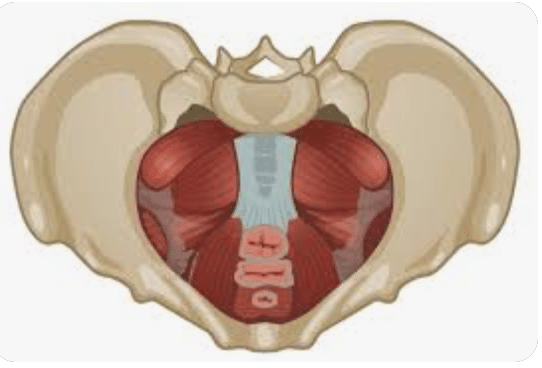Pelvic floor dysfunction. We talk a lot about this but what is it exactly?
First things first. We all have a pelvic floor but many people aren’t aware of what it is or where it is located. A pelvic floor is a group of muscles and connective tissues that form a hammock-like structure at the base of the pelvis. It spans from the pubic bone at the front of the pelvis to the tailbone at the back, and from one sit bone to the other. The pelvic floor muscles are responsible for supporting the organs in the pelvis, including the bladder, uterus, and rectum, and for controlling urinary and bowel functions as well as sexual activity.
How do you know if your pelvic floor is giving you trouble? Here are a few symptoms:
Urinary incontinence or urgency: This is a common symptom of pelvic floor dysfunction and may include leaking urine when laughing, coughing, or sneezing, exercising, or a sudden and urgent need to urinate.
Fecal incontinence: This is the inability to control bowel movements and can range from occasional leakage to a complete loss of control.
Pelvic pain: This can be experienced in the lower abdomen, groin, or pelvic region and may be constant or intermittent. It may also be accompanied by discomfort during sexual activity.
Pain during sexual activity: This can include discomfort, pain, or a feeling of pressure in the pelvic region during sexual activity.
Pelvic organ prolapse: This is a condition in which the pelvic organs, such as the bladder, uterus, or rectum, descend into the vaginal canal.
How does pelvic floor physical therapy help?
Pelvic floor physical therapy (PFPT) focuses on the muscles, tissues, and structures of the pelvic floor. During an initial evaluation, the therapist will assess the strength, coordination, and function of the pelvic floor muscles, as well as any associated areas, such as the hips and lower back.
From that assessment, an individual plan of care will be created that may include exercises to strengthen or relax the pelvic floor muscles, manual therapy, education on bladder and bowel habits, and lifestyle modifications.
The Takeaway
If you are experiencing any of the symptoms listed, you do not have to “just deal with it” or “live with it” or think “This is just my life now”. As women, we tend to put everyone’s needs before ours. Investing in yourself and having a great quality of life is something you deserve.
If you are ready to take the next step in your health and wellness, give us a call to set up a 30-minute Discovery Visit. We would love to meet you, hear your concerns, and see if we are a good fit. You are worth it!

